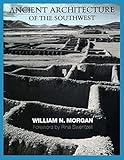Ancient Architecture of the Southwest / William N. Morgan.
Material type: TextPublisher: Austin : University of Texas Press, [2021]Copyright date: ©1994Description: 1 online resource (339 p.)Content type:
TextPublisher: Austin : University of Texas Press, [2021]Copyright date: ©1994Description: 1 online resource (339 p.)Content type: - 9780292799080
- 720
- online - DeGruyter
| Item type | Current library | Call number | URL | Status | Notes | Barcode | |
|---|---|---|---|---|---|---|---|
 eBook
eBook
|
Biblioteca "Angelicum" Pont. Univ. S.Tommaso d'Aquino Nuvola online | online - DeGruyter (Browse shelf(Opens below)) | Online access | Not for loan (Accesso limitato) | Accesso per gli utenti autorizzati / Access for authorized users | (dgr)9780292799080 |
Frontmatter -- CONTENTS -- FOREWORD -- ACKNOWLEDGMENTS -- INTRODUCTION -- PHOTOGRAPHS -- EARLY SETTLEMENTS TO A.D. 900 -- REGIONAL DEVELOPMENTS, 900 TO 1140 -- Mogollon -- Hohokam -- Chaco Canyon Anasazi -- SAN JUAN BASIN ANASAZI -- NORTHERN SAN JUAN ANASAZI -- VIRGIN AND KAYENTA ANASAZI -- MIGRATION AND CONSOLIDATION, 1300 TO 1540 -- Mogollon -- HOHOKAM -- SALADO -- ZUNI (ANASAZI) -- HOPI (ANASAZI) -- SINAGUA -- filO GRANDE ANASAZI -- HISTORIC PUEBLOS, 1540 TO PRESENT -- ZUNI -- HOPI -- RIO GRANDE -- OVERVIEW -- GLOSSARY -- PRONUNCIATION GUIDE -- BIBLIOGRAPHY -- INDEX
restricted access online access with authorization star
http://purl.org/coar/access_right/c_16ec
During more than a thousand years before Europeans arrived in 1540, the native peoples of what is now the southwestern United States and northern Mexico developed an architecture of rich diversity and beauty. Vestiges of thousands of these dwellings and villages still remain, in locations ranging from Colorado in the north to Chihuahua in the south and from Nevada in the west to eastern New Mexico. This study presents the most comprehensive architectural survey of the region currently available. Organized in five chronological sections that include 132 professionally rendered site drawings, the book examines architectural evolution from humble pit houses to sophisticated, multistory pueblos. The sections explore concurrent Mogollon, Hohokam, and Anasazi developments, as well as those in the Salado, Sinagua, Virgin River, Kayenta, and other areas, and compare their architecture to contemporary developments in parts of eastern North America and Mesoamerica. The book concludes with a discussion of changes in Native American architecture in response to European influences.
Mode of access: Internet via World Wide Web.
In English.
Description based on online resource; title from PDF title page (publisher's Web site, viewed 26. Apr 2022)


